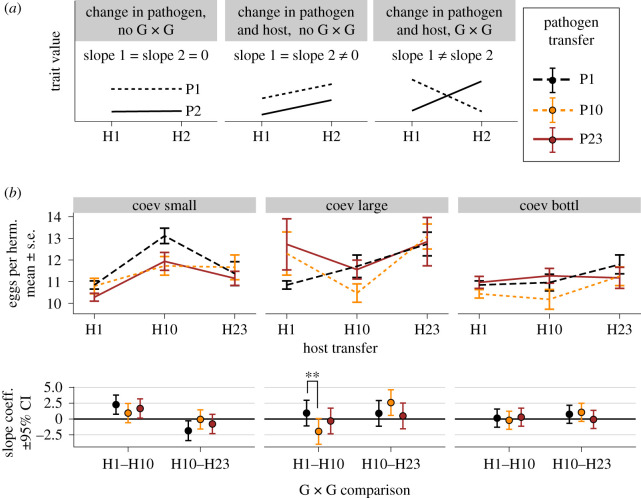Figure 3.
The emergence of host–pathogen GH × GP interactions during coevolution. (a) Hypothetical reaction norms for presence or absence of GH × GP. A cross-infection experiment combining hosts (H1, H2) and pathogens (P1, P2) from two coevolution time-points may reveal three scenarios: (left panel) parallel horizontal lines indicating a trait change in one antagonist only; (middle panel) parallel non-horizontal lines indicating a change in both antagonists without GH × GP; or (right panel) non-parallel lines suggesting GH × GP interactions. (b) Reaction norms for host fertility. The top panels show reaction norms reconstructed by measuring host fertility in all combinations of hosts and pathogens from transfers 1, 10, 23 (15–16 biological replicates per time-point combination; error bars show standard error of means). Different colours depict results for pathogens from 1, 10 and 23. Left, middle and right columns show results for small, large and bottlenecked populations, respectively. The bottom panels show slope coefficients estimated for the corresponding reaction norm lines from the top panels. The error bars indicate 95% confidence intervals adjusted using the single-step method. The absence of GH × GP would have similar slopes, while GH × GP interactions non-equal slopes. Statistically significant GH × GP were identified for interactions at transfers 1 and 10 in large populations (electronic supplementary material, tables S12 and S13). (Online version in colour.)

